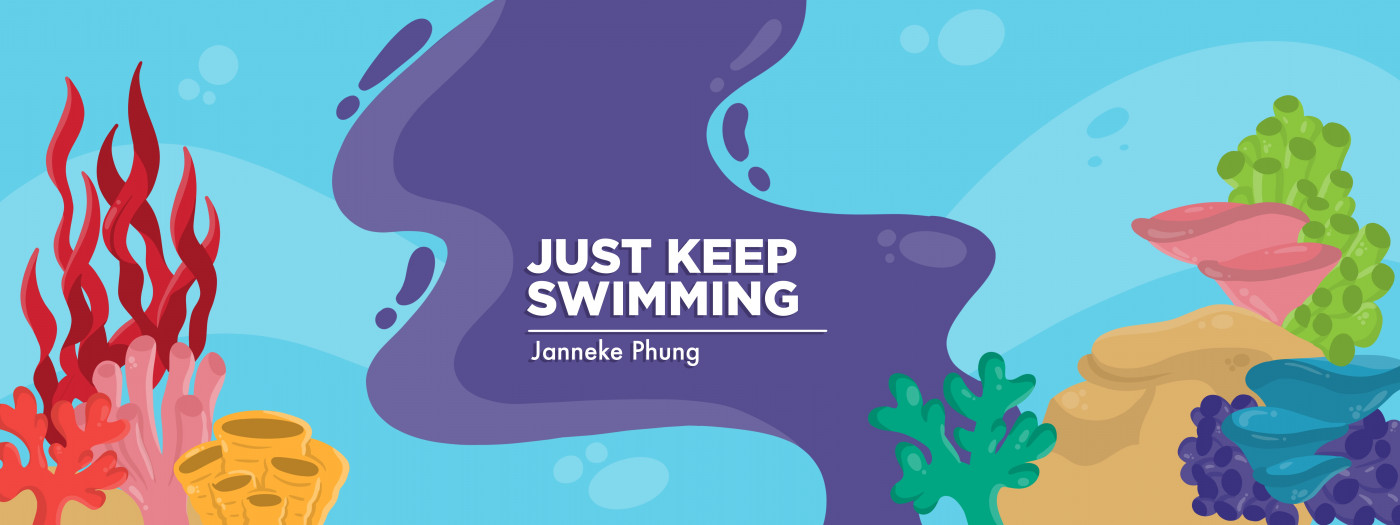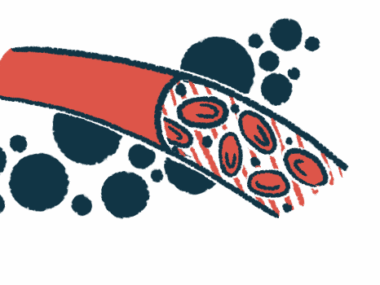After Diagnosis, Treatment Options Can Boost Hope
Written by |

On Saturday, Nov. 2, 2019, I was informally diagnosed with ankylosing spondylitis. I had already unknowingly suffered the symptoms of AS for years.
Realizing I was suffering from an incurable disease stopped me dead in my tracks. I felt a strong compulsion to immediately try to stop whatever was “eating my body up.” As any normal person would, I Googled for hours trying to figure out what this disease was and how others struggling with it were faring. But researching illnesses online wasn’t a good idea, as it added unnecessary worry.
I gathered that I likely was only in the beginning stages of the disease. I realized that time would not heal me. Because AS is a progressive disease, I could be certain that things would only go downhill from where I was. It was a life sentence. That was terrifying, and my future looked grim.
After informing me about my diagnosis, my family doctor calmly and emphatically told me, “Don’t worry. The rheumatologist will help get you on the right medications.” But my initial appointment with a rheumatologist was still months away. I needed help immediately. I wasn’t doing well, and it was a terrible feeling knowing that this inflammatory disease was slowly progressing as I waited to see an expert.
When a person is diagnosed with a progressive disease, they might feel like they have lost control of their body and their life. When all evidence points toward a continued decline of one’s condition, it’s easy to feel discouraged. And when a family doctor points the patient only toward a rheumatologist, it can seem as though there’s no other option but to wait with apprehension, dread, and pain.
I remember thinking at the time of my diagnosis, “I wonder if there is anything I can do while I wait?”
As any desperate human would do, I went on the prowl for ankylosing spondylitis support groups on Facebook. I joined some, but found them to be more depressing than supportive.
Then one day, someone mentioned a group that approached the disease from a different perspective by focusing on dietary changes, particularly implementing a low- or no-starch lifestyle. I figured I had nothing to lose while I waited for my appointment with the rheumatologist.
Choosing the right road
Fast-forward to today. As I drove down that post-diagnosis highway, I recalled how my first glimmer of hope had resulted from the realization that I had a choice.
I live in Calgary, Alberta, a Canadian city about an hour away from the stunning Rocky Mountains. Two roads lead to the mountains: Highway 1 and Highway 1A.
Highway 1 is a multilane highway where vehicles move fast. It is well-known and well-traveled by most people heading west from Calgary, simply because it’s predictable and well-serviced. You go with the flow.
Highway 1A, which runs parallel to Highway 1, is a gorgeous, two-lane highway with adjacent roads that give drivers control over which direction they want to head. It is narrower and less traveled, but still an excellent option.
These highways are linked by roads, so if drivers decide they want to switch from one to the other, they can simply change their route. I feel the same about AS treatment options. (I should point out that in Canada, we have universal, publicly funded healthcare.)
Medication
Medication is the most mainstream treatment option for AS and can provide significant relief from some people’s symptoms. As patients, we go with the flow of what doctors and specialists recommend, possibly without considering other options or even realizing that we have them.
We might have hiccups along the way, but this road is serviced well enough that we often have expert medical help available when we need it.
Lifestyle changes
Lifestyle changes offer patients an enormous amount of control during the journey toward health and healing. The ultimate goal here is to naturally lower inflammation at its source through diet, exercise, less stress, and increased sleep, among others.
This is a less popular option and not necessarily an easy one. It often requires a person to be their own advocate. It can be scary and overwhelming, and it requires determination and strength. It may feel like a bit of an experiment, but it also can be empowering and lead to success.
There is no “easier” option, nor is there a one-size-fits-all solution. Flexibility is important.
But most important is knowing that options exist, allowing people to have more control over their disease than they might have initially thought.
As for me, I felt I was forced to make extreme lifestyle choices while waiting for an appointment with the rheumatologist. At the end of that appointment, I was pleased to leave without a prescription for medication.
***
Note: Ankylosing Spondylitis News is strictly a news and information website about the disease. It does not provide medical advice, diagnosis, or treatment. This content is not intended to be a substitute for professional medical advice, diagnosis, or treatment. Always seek the advice of your physician or other qualified health provider with any questions you may have regarding a medical condition. Never disregard professional medical advice or delay in seeking it because of something you have read on this website. The opinions expressed in this column are not those of Ankylosing Spondylitis News, or its parent company, Bionews, and are intended to spark discussion about issues pertaining to ankylosing spondylitis.








Avijit Satapathy
I am living with Sulfasalazine 1000 thrice with Naproxen 250 twice and enormous exercise
Janneke Phung
Hi Avijit, thank you for sharing about your situation. I'm hoping your treatment is giving you the relief you are seeking as suffering with AS is miserable. I also applaud you for exercising often - I agree that it is great for both my physical and mental well-being as well! Hang in there!
Michael Gale
WHEN I WAS DIAGNOSED I WENT TO HEATED SWIMMING POOL EXERCISE AT A REHABLITATION? EXERCISE PLACE CALLED HEALTH SOUTH WHICH HAS SINCE CLOSED FROM MISMANAGED EMBEZZLEMENTS THAT I READ ABOUT! BYCYCLE AND SISSOR RUNNING NEXT TO A WALL,AND BYCYCLE LEG RAISES HELPED WHILE FLOATING WITH A SPECIAL FLOATING VEST AND A COUPLA NOODLES BEHIND ME UNDER MY ARMS!!! I NOW TAKE HUMIRA SHOTS EVERY MONDAY,I STILL HAVE SEVERE BACK PAIN NEAR THE KIDNEYS JUST BELOW THE RIBS EITHER TO THE LEFT AND RIGHT OF MY SPINE!! I WAS TAKING A PILL THAT SEVERELY CHANGED MY MY MOOD INTO VERY HIGH ANXIETY CALLED INDEMETHCINE!!!
Liz
Are there any specifics you can share on the diet regime you have chosen/ works for you or specific exercises that help. Were any of your vertebrae fused by the time you were diagnosed?
Janneke Phung
Thanks for chiming in, Liz!
I feel as though my story is so long that it needs to be broken up into several columns. You'll be reading more about my journey as time goes on. :)
The most critical dietary change I made was cutting starch - every trace of it (in supplements, spices, seasonings etc.). In addition, by doing an AIP elimination diet I'm learning which other foods cause inflammation in my body. For example, many people will react to dairy, eggs, nuts, nightshades etc. Now that my body is no longer in a constant state of inflammation it is actually becoming much easier to know when I am reacting to a certain food.
I was fortunate to not have any fused vertebrae by the time I was diagnosed. There was lots of evidence of chronic inflammation on the MRI used to diagnose me. Thankfully, with diet and lifestyle changes all of the inflammation markers have disappeared both in bloodwork and imaging and symptoms of AS have reduced by pretty well 99% (weather, stress etc. can still cause minor physical pain at times).
Personally, I prefer just to be active with my kids (biking, hiking, etc.) as just the movement helps me feel better. I also feel I get huge benefits from doing Yoga with Adrienne videos on YouTube.
Michael Gale
WHEN I WAS DIAGNOSED I WENT TO HEATED SWIMMING POOL EXERCISE AT A REHABLITATION? EXERCISE PLACE CALLED HEALTH SOUTH WHICH HAS SINCE CLOSED FROM MISMANAGED EMBEZZLEMENTS THAT I READ ABOUT! BYCYCLE AND SISSOR RUNNING NEXT TO A WALL,AND BYCYCLE LEG RAISES HELPED WHILE FLOATING WITH A SPECIAL FLOATING VEST AND A COUPLA NOODLES BEHIND ME UNDER MY ARMS!!! I NOW TAKE HUMIRA SHOTS EVERY MONDAY,I STILL HAVE SEVERE BACK PAIN NEAR THE KIDNEYS JUST BELOW THE RIBS EITHER TO THE LEFT AND RIGHT OF MY SPINE!! I WAS TAKING A PILL THAT SEVERELY CHANGED MY MY MOOD INTO VERY HIGH ANXIETY CALLED INDEMETHCINE!!!
Janneke Phung
Hi Michael, it sounds like you've been on quite the AS journey. I am so sorry that the pain persists, despite taking Humira shots. Dealing with a disease is difficult enough on its own - added negative side effects from drugs can add so much more discouragement. Thank you for sharing your story!